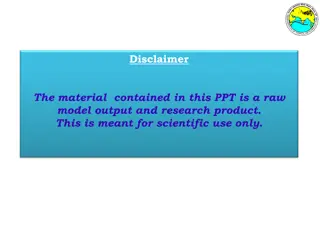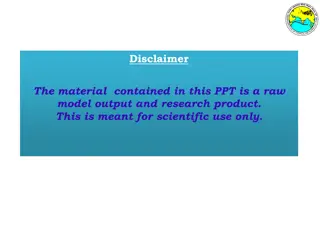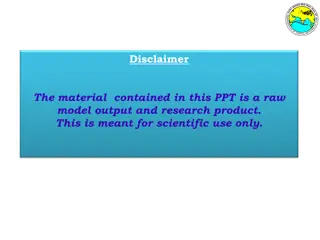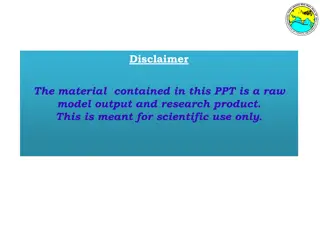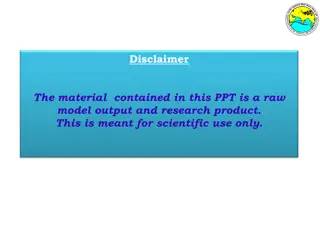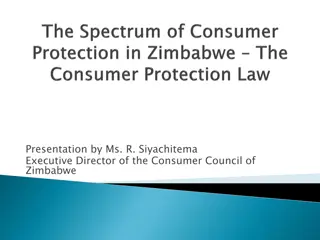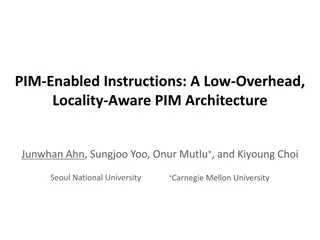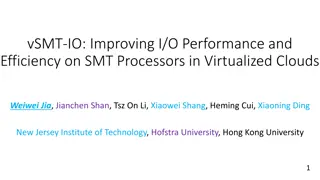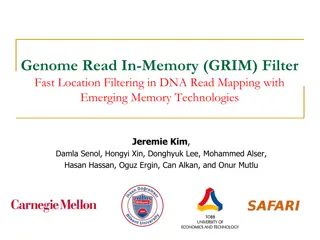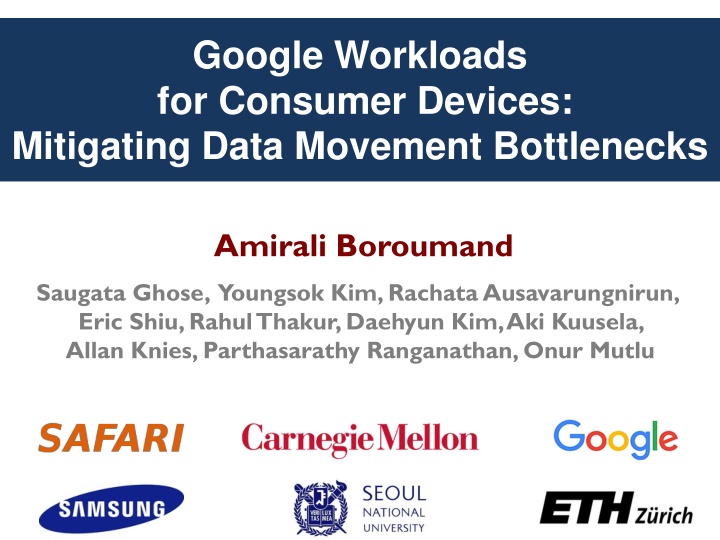
Mitigating Data Movement Bottlenecks in Google Workloads for Consumer Devices
Learn how Google addresses data movement bottlenecks in consumer devices through innovative solutions like Processing-In-Memory (PIM) and lightweight logic designs to reduce energy consumption and improve performance.
Download Presentation

Please find below an Image/Link to download the presentation.
The content on the website is provided AS IS for your information and personal use only. It may not be sold, licensed, or shared on other websites without obtaining consent from the author. If you encounter any issues during the download, it is possible that the publisher has removed the file from their server.
You are allowed to download the files provided on this website for personal or commercial use, subject to the condition that they are used lawfully. All files are the property of their respective owners.
The content on the website is provided AS IS for your information and personal use only. It may not be sold, licensed, or shared on other websites without obtaining consent from the author.
E N D
Presentation Transcript
Google Workloads for Consumer Devices: Mitigating Data Movement Bottlenecks Amirali Boroumand Saugata Ghose, Youngsok Kim, RachataAusavarungnirun, Eric Shiu, RahulThakur, Daehyun Kim, Aki Kuusela, Allan Knies, Parthasarathy Ranganathan, Onur Mutlu
Consumer Devices Consumer devices are everywhere! Energy consumption is a first-class concern in consumer devices 2
Popular Google Consumer Workloads Chrome Google s web browser TensorFlow Mobile Google s machine learning framework Video Playback Google s video codec Video Capture Google s video codec 3
Energy Cost of Data Movement 1st key observation: 62.7% of the total system energy is spent on data movement Data Movement SoC CPU DRAM CPU CPU CPU L2 L1 Compute Unit Processing-In-Memory (PIM) Potential solution: move computation close to data Challenge: limited area and energy budget 4
Using PIM to Reduce Data Movement 2nd key observation: a significant fraction of the data movement often comes from simple functions We can design lightweight logic to implement these simple functions in memory Small embedded low-power core Small fixed-function accelerators PIM PIM Accelerator Accelerator PIM Core PIM Accelerator Offloading to PIM logic reduces energy and improves performance, on average, by 55.4% and 54.2% 5
Google Workloads for Consumer Devices: Mitigating Data Movement Bottlenecks Amirali Boroumand Saugata Ghose, Youngsok Kim, RachataAusavarungnirun, Eric Shiu, RahulThakur, Daehyun Kim, Aki Kuusela, Allan Knies, Parthasarathy Ranganathan, Onur Mutlu Location: Virgina EF Time: 11:10 AM






